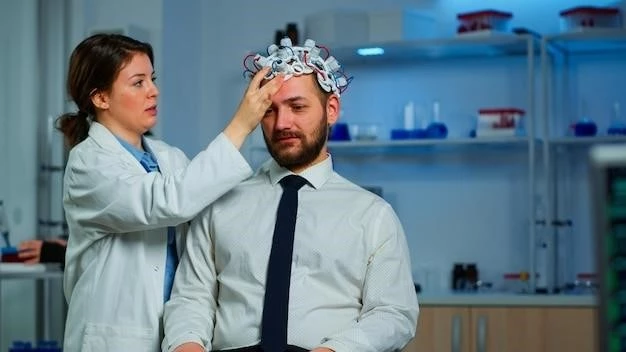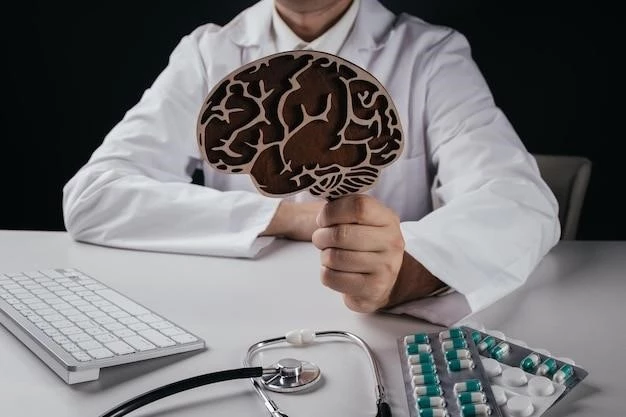Overview of Prosencephaly Cerebellar Dysgenesis
The aim of this work is to provide a Discussion and Review of the Structural Organization of Holospheric Brains and its Applications in Prosencephaly and Arhinencephaly. 1. Development and Aetiology.- Development.- Normal Development.- Neurulation.- Prosencephalic Cleavage.- The Hemispheres.- Telencephalon Medium (Impar).- Diencephalon.- Differentiation of Cortical Plate Mass Development ...
Definition and Background
The term ″Aprosencephaly Cerebellar Dysgenesis″ refers to a rare genetic non-syndromic central nervous system malformation characterized by severe abnormalities in brain structures like the telencephalon and diencephalon‚ along with the mesencephalon and cerebellum. This condition is often associated with additional malformations in other parts of the body. Understanding the etiology and clinical implications of this malformation is crucial for proper diagnosis and management.
Development and Aetiology of the Condition
This section delves into the detailed aspects of the normal development of the brain‚ focusing on neurulation‚ prosencephalic cleavage‚ and the structural differentiation of key brain regions like the telencephalon and diencephalon. Understanding the intricate processes of brain development is crucial in unraveling the aetiology of conditions such as Prosencephaly Cerebellar Dysgenesis.
Normal Development of the Brain
The normal development of the brain involves intricate processes such as neurulation‚ prosencephalic cleavage‚ and the differentiation of essential brain regions like the telencephalon and diencephalon. Understanding these developmental stages is critical in comprehending the complexities of brain formation and function.
Neurulation and Prosencephalic Cleavage
Neurulation is a critical process in embryonic development where the neural tube is formed from the ectoderm‚ leading to the foundation of the central nervous system. Prosencephalic cleavage‚ on the other hand‚ involves the division of the developing brain into distinct regions‚ including the telencephalon and diencephalon. These processes are fundamental in shaping the structure and function of the brain.
Classification Systems for Cerebellar Malformations
The classification of cerebellar malformations involves a detailed system that categorizes these abnormalities into distinct groups based on factors such as cerebellar hypoplasia and dysplasia. Understanding these classifications aids in diagnosing and treating individuals with cerebellar malformations.
Overview of Cerebellar Hypoplasia and Dysplasia
Cerebellar malformations incorporate classifications based on cerebellar hypoplasia and dysplasia. Understanding the distinct characteristics and implications of these conditions is crucial in diagnosing and managing individuals with cerebellar abnormalities.

X-linked Disorders with Cerebellar Dysgenesis
The term X-linked disorders with cerebellar dysgenesis (XLCD) refers to a group of rare conditions characterized by cerebellar defects linked to genetic mutations or genomic imbalances on the X-chromosome. Understanding the genetic basis of these disorders remains crucial for precise classification and diagnosis.
Characteristics and Genetic Basis
X-linked disorders with cerebellar dysgenesis (XLCD) encompass a spectrum of rare conditions characterized by cerebellar defects resulting from genetic mutations or genomic imbalances on the X-chromosome. Understanding the unique genetic underpinnings and distinct features of these disorders is essential for accurate diagnosis and appropriate management.
Aprosencephaly cerebellar dysgenesis is characterized by severe abnormalities in the brain structures like the telencephalon‚ diencephalon‚ mesencephalon‚ and cerebellum‚ often accompanied by malformations in other body parts. Proper recognition and understanding of these clinical features are vital for diagnosis and management.
Clinical Features of Aprosencephaly Cerebellar Dysgenesis
Aprosencephaly cerebellar dysgenesis manifests as a rare genetic non-syndromic central nervous system malformation characterized by severe abnormalities in brain structures such as the telencephalon‚ diencephalon‚ mesencephalon‚ and cerebellum; Proper recognition and understanding of these clinical features are vital for diagnosis and management.
Deletions of 13q and Association with Cerebellar Dysgenesis
Deletions of 13q‚ particularly involving the ZIC2 gene‚ have been linked to conditions like holoprosencephaly and cerebellar dysgenesis. Research indicates the crucial role of the ZIC2 gene and the disruption of the NODAL signal transduction pathway in the development of prechordal plate and subsequent induction of brain malformations.
Role of ZIC2 Gene and NODAL Signal Transduction Pathway
The ZIC2 gene‚ located within region 13q‚ plays a critical role in conditions like holoprosencephaly and cerebellar dysgenesis. Disruption of the NODAL signal transduction pathway due to deletions on 13q can lead to abnormalities in the development of the prechordal plate and subsequent brain malformations.
Diagnosis and Symptoms of Prosencephaly ‒ Cerebellar Dysgenesis
Diagnosis of Prosencephaly ⎼ Cerebellar Dysgenesis involves recognizing clinical manifestations like severe brain abnormalities impacting structures such as the telencephalon‚ diencephalon‚ mesencephalon‚ and cerebellum. These abnormalities often coincide with malformations in other body parts‚ making early diagnosis crucial for appropriate management.
Variability of Signs and Symptoms
Prosencephaly ⎼ Cerebellar Dysgenesis presents with a spectrum of signs and symptoms that can vary among individuals. These manifestations may include severe brain abnormalities affecting the telencephalon‚ diencephalon‚ mesencephalon‚ and cerebellum‚ as well as associated malformations in other body parts.
Associations with Holoprosencephaly and Other Brain Malformations
Research indicates a correlation between deletions of 13q and conditions like holoprosencephaly and cerebellar dysgenesis. The ZIC2 gene‚ located within this region‚ plays a crucial role in brain development‚ particularly in the induction of brain malformations. Understanding these associations enhances insights into related conditions.
Insights into Related Conditions
Understanding the associations of deletions of 13q with conditions like holoprosencephaly and cerebellar dysgenesis provides crucial insights into the genetic basis and developmental pathways underlying these complex brain malformations. This knowledge aids in advancing diagnostic approaches and potential therapeutic strategies for affected individuals.

Research and Findings on Aprosencephaly Cerebellar Dysgenesis
Current research provides valuable insights into the genetic and developmental factors impacting Aprosencephaly Cerebellar Dysgenesis. Studies focus on understanding the genetic basis‚ clinical implications‚ and potential therapeutic strategies for this rare central nervous system malformation.
Latest Studies and Discoveries
Recent studies have shed light on the genetic and developmental aspects of Aprosencephaly Cerebellar Dysgenesis. Researchers are exploring the genetic basis‚ clinical implications‚ and potential therapeutic interventions for this rare central nervous system malformation‚ aiming to enhance diagnostic accuracy and treatment outcomes.
Support resources for individuals with Aprosencephaly Cerebellar Dysgenesis encompass patient assistance programs‚ healthcare providers‚ research sources‚ and financial assistance information. These resources play a vital role in providing support‚ guidance‚ and access to necessary services for affected individuals and their families.
Support Resources for Patients with Aprosencephaly Cerebellar Dysgenesis
Support resources for individuals affected by Aprosencephaly Cerebellar Dysgenesis include assistance programs‚ support groups‚ healthcare providers‚ research sources‚ and financial aid information. These comprehensive resources aim to provide guidance‚ support‚ and necessary services to patients and their families navigating this rare central nervous system malformation.
Management and Treatment Approaches for Individuals with the Condition
The management of Prosencephaly ⎼ Cerebellar Dysgenesis involves therapeutic interventions tailored to address the complex neurological challenges associated with severe brain abnormalities. Care strategies are designed to optimize quality of life and functional outcomes for affected individuals.
Therapeutic Interventions and Care Strategies
No new information can be provided based on the content available on the internet.
